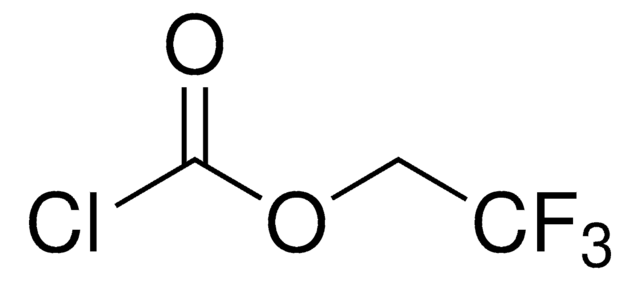Dry sieve residue 63 μm is between 10 - 22 % for this product. Usage of this item is predominantly reported for organic synthesis as a solid lewis acid catalyst or nanofiller. Consult specific research to determine if the material has been used for a similar application. A couple of articles that may be of potential interest to you are defined below.
69866
Montmorillonite
K 10, powder
Synonim(y):
K-Catalyst
Wybierz wielkość
140,00 zł
Wybierz wielkość
About This Item
140,00 zł
Polecane produkty
Formularz
powder
pH
3-4
ciąg SMILES
[Si](=O)=O.[Si](=O)=O.[Si](=O)=O.[Si](=O)=O.[Al+3].[Al+3].[O-2].[O-2].[O-2].O
InChI
1S/2Al.4O2Si.H2O.3O/c;;4*1-3-2;;;;/h;;;;;;1H2;;;/q2*+3;;;;;;3*-2
Klucz InChI
GUJOJGAPFQRJSV-UHFFFAOYSA-N
Szukasz podobnych produktów? Odwiedź Przewodnik dotyczący porównywania produktów
Powiązane kategorie
Opis ogólny
Zastosowanie
- A nanofiller to improve the mechanical properties of poly(vinyl alcohol) (PVA) film for potential usage in packaging applications.[2]
- A catalyst in the conversion of polar and non-polar algae oil lipids to biodiesel.[3]
It can also be used:
- As a nanofiller in the preparation of biopolymer based nanocomposites.[4]
- In the preparation of Fe3+-montmorillonite, a solid acid catalyst for the synthesis of xanthenedione derivatives.[5]
Kod klasy składowania
11 - Combustible Solids
Klasa zagrożenia wodnego (WGK)
WGK 3
Temperatura zapłonu (°F)
Not applicable
Temperatura zapłonu (°C)
Not applicable
Środki ochrony indywidualnej
Eyeshields, Gloves, type N95 (US)
Wybierz jedną z najnowszych wersji:
Masz już ten produkt?
Dokumenty związane z niedawno zakupionymi produktami zostały zamieszczone w Bibliotece dokumentów.
Klienci oglądali również te produkty
-
Can this be used as a nucleating agent? If yes, is there a size associated with the particles?
1 answer-
Helpful?
-
-
How can I determine the shelf life / expiration / retest date of this product?
1 answer-
If this product has an expiration or retest date, it will be shown on the Certificate of Analysis (COA, CofA). If there is no retest or expiration date listed on the product's COA, we do not have suitable stability data to determine a shelf life. For these products, the only date on the COA will be the release date; a retest, expiration, or use-by-date will not be displayed.
For all products, we recommend handling per defined conditions as printed in our product literature and website product descriptions. We recommend that products should be routinely inspected by customers to ensure they perform as expected.
For products without retest or expiration dates, our standard warranty of 1 year from the date of shipment is applicable.
For more information, please refer to the Product Dating Information document: https://www.sigmaaldrich.com/deepweb/assets/sigmaaldrich/marketing/global/documents/449/386/product-dating-information-mk.pdfHelpful?
-
-
How is shipping temperature determined? And how is it related to the product storage temperature?
1 answer-
Products may be shipped at a different temperature than the recommended long-term storage temperature. If the product quality is sensitive to short-term exposure to conditions other than the recommended long-term storage, it will be shipped on wet or dry-ice. If the product quality is NOT affected by short-term exposure to conditions other than the recommended long-term storage, it will be shipped at ambient temperature. As shipping routes are configured for minimum transit times, shipping at ambient temperature helps control shipping costs for our customers. For more information, please refer to the Storage and Transport Conditions document: https://www.sigmaaldrich.com/deepweb/assets/sigmaaldrich/marketing/global/documents/316/622/storage-transport-conditions-mk.pdf
Helpful?
-
-
Could you please provide me with the CEC of your montmorillonite nanoclays?
1 answer-
Among the Montmorillonite products listed, there is essentially no distinction in terms of Cation Exchange Capacity (CEC, reported in terms of milliequivalents per 100 grams of material). For Montmorillonite K10 (Products 69866 and 281522), the CEC has been variously reported as either 30-40 meq/100g or just 30 meq/100g. And for Montmorillonite K30 (Prodct 69904), the CEC has been reported as 30 meq/100g.
Helpful?
-
Active Filters
Nasz zespół naukowców ma doświadczenie we wszystkich obszarach badań, w tym w naukach przyrodniczych, materiałoznawstwie, syntezie chemicznej, chromatografii, analityce i wielu innych dziedzinach.
Skontaktuj się z zespołem ds. pomocy technicznej








